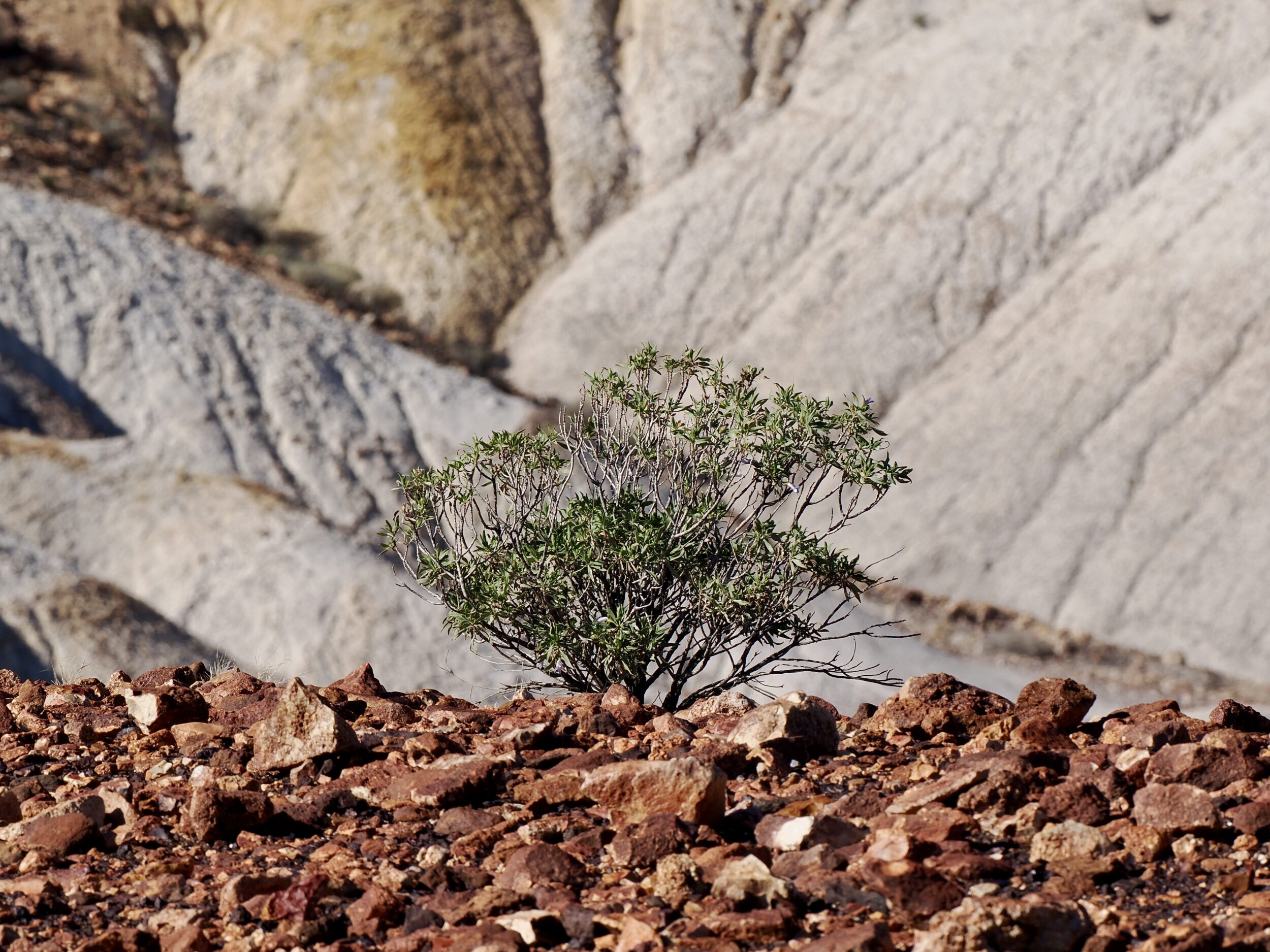This post’s “much closer view” involved almost the very same vantage point as the previous post’s “landscape” image.
You may recognise the particular bush which is present in both photos…but to very different effect.
My feet were probably a whisker closer to the edge, and I had probably crouched down to bring the lens nearer to the ground, but the key factor was that this post’s image involved a 400mm lens – more than ten times “longer” than the wider-angle lens deployed for “12A”.
Neither photo is “lying”, but each highlights different “truths”, different aspects.
As any flying creature moves through a landscape – up, down, and across it, in various directions – it will “see” that landscape in many different ways..so much so that the “same” landscape never remains “the same”.
The same holds true – albeit with limitations – for non-flying animals, humans included.
Even if one imitated a statue for hours on end, the sun, moon, and weather would ensure that your “static” view of the landscape would keep changing – sometimes, radically.
All of the above factors are any photographer’s “best friends”, “worst enemies” and “opportunities” – variously, seized, ignored, lost, or “unavailable at this very moment, but you never know precisely what the next moment will offer”
The best photographers are those who pay attention, who understand that even a tiny movement or change of position can make a BIG difference…whether the movement is your own, the sun’s, a cloud’s, a leaf’s, a bird’s….
They also constantly make active decisions – often, oft-changing decisions – about exactly what needs to be “in the frame”, where in the frame it or they should sit, how much or little of the frame it or they should occupy, what and how much should be “perfectly in focus”… and – perhaps, most importantly – what is best left right out.
On the one hand, it is always best to try to “get everything right” before you release the shutter.
On the other, once the photo has been taken, it is always best to look at the image very carefully, and then be appropriately “ruthless” – to be open to leaving it well alone, to modifying it a little, to altering it radically (sometimes, lurking somewhere within a lousy photo there is a really good photo that you had never intended to take), or to deleting it, immediately.
Some of those decisions are “easy”. (who would wish to have a power line running through a “wild” landscape? It is often dead-easy to avoid the power line, simply by noticing it in the first place, and then positioning self and camera, accordingly)
Others are difficult/ a matter of “taste”.
